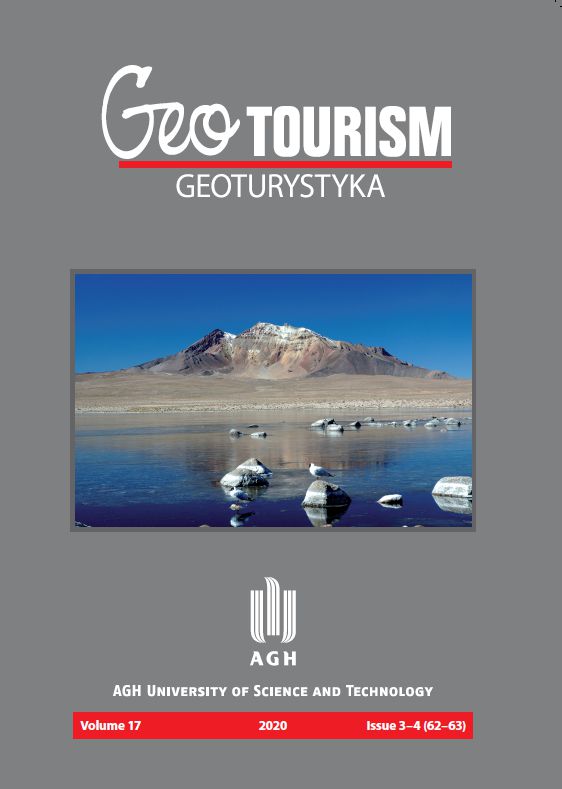Stratovolcanoes on the Chilean-Bolivian border as geoatraction
DOI:
https://doi.org/10.7494/geotour.2020.3-4(62-63).47Abstract
The cluster of stratovolcanoes located on the Chilean-Bolivian border, in the Western Cordillera, is composed of typical, for that part of the Central Volcanic Zone in the Andes, volcanic landforms. The highest volcano is the Nevado Sajama (6,542 m a.s.l.), apparently extinct. The other: Parinacota (6,336 m a.s.l.), Pomerape (6,222 m a.s.l.), Acotango (6,052 m a.s.l.) and Cerro Quisiquisini (5,542 m a.s.l.) were all active in both the Pleistocene and the Holocene. Recently, only the Guallatiri Volcano (6,071 m a.s.l.) is still active. The summits of these mountains are covered with permanent snow or ice caps. On the slopes, there are post-glacial valleys,
rocks glaciers and debris avalanches. In the vicinity of volcanic cones, active fumaroles occur, along with hot springs, geysers and high-mountain peat bogs (bofedales), in addition to one of the highest in the world mountain lakes – the Lago Chungará (4,520 m a.s.l.). The unique landform is a huge debris avalanche and was formed during the eruption of the Parinacota Volcano. Small villages settled by Aymara Indians and their cultural monuments complete the extraordinary landscape of the Altiplano Plateau. The values of biotic nature are also unique and deserving of protection on both sides of the state border. Moreover, these sites have been registered into the UNESCO World Heritage List. Modest accommodation facilities located off the main roads satisfy the qualified tourists interested in volcanology. The authors describe the grueling trekking trails, the climbing routes leading to the summits of volcanoes and the other geoattractions, accessible for ordinary hikers.
Downloads
Downloads
Published
Issue
Section
License

This work is licensed under a Creative Commons Attribution 3.0 Unported License.

The content of the journal is freely available according to the Creative Commons License Attribution 4.0 International (CC BY 4.0).


